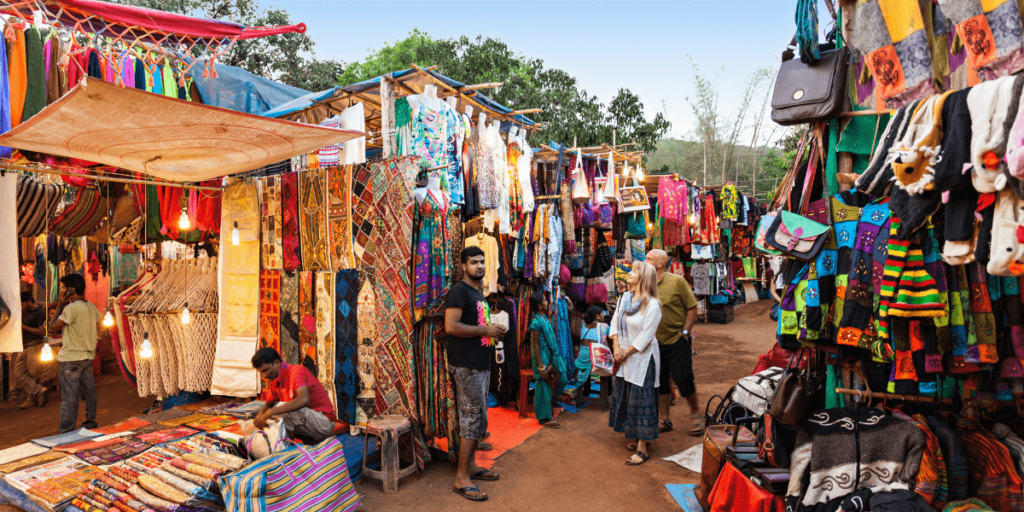Table of Contents
Introduction:
Rural marketing strategies in India, stand tall as a pivotal element, unlocking the vast potential nestled in rural landscapes. This blog embarks on an insightful journey into the world of rural marketing, unraveling its importance, navigating challenges, and presenting effective strategies to forge connections with rural consumers. From the nuances of understanding the rural market to the utilization of local channels, emphasis on word-of-mouth marketing, and harnessing technology, we delve into a comprehensive exploration. Additionally, we shed light on innovative distribution strategies, showcasing the immense potential for lucrative rewards in the realm of rural marketing.
What is Rural Marketing in the Indian Context?

In the Indian context, rural marketing emerges as the art and science of comprehending, reaching out to, and satisfying the distinctive needs of rural consumers. Crafted marketing strategies align seamlessly with the unique demographics, cultural intricacies, and consumption patterns of the majority of India’s population residing in rural areas.
Why are Rural Marketing Strategies Important?
- Vast Consumer Base: Rural India encompasses a substantial portion of the nation’s population, offering an expansive market poised for substantial growth and expansion.
- Economic Empowerment: Government initiatives and agricultural advancements contribute to rising disposable income in rural areas, presenting businesses with opportunities to cater to evolving consumer aspirations.
- Untapped Potential: Unlike saturated urban markets, rural markets remain largely untapped, providing businesses with a chance to pioneer and establish a strong foothold.
- Sustainable Growth: A robust presence in rural India translates to sustained growth, as rural consumers often develop long-term brand loyalty.
- Contributing to Rural Development: Effective rural marketing not only benefits businesses but also plays a vital role in the socio-economic development of rural areas by generating employment opportunities and fostering economic activity.
Rural Marketing Strategies : Navigating the Challenges:
- Infrastructural Barriers: Challenges such as poor transportation networks, limited access to modern retail outlets, and digital infrastructure gaps pose obstacles in rural areas.
- Cultural Diversity: The diverse cultural and linguistic landscape of rural India demands marketers tailor their strategies to align with local preferences.
- Education and Awareness: Lower levels of awareness and education among rural consumers necessitate clear and simple communication strategies to effectively convey brand messages.
- Price Sensitivity: Rural consumers in India exhibit high price sensitivity, emphasizing the need to offer products and services that provide value for money to gain trust.
- Distribution Complexities: Efficient distribution networks are crucial in rural India, but challenges like dispersed populations and inadequate logistics infrastructure require innovative solutions.
Effective Rural Marketing Strategies for Success in India
- Local Insights: Conduct thorough market research to gain insights into the specific needs and preferences of rural consumers in different regions of India.
- Cultural Relevance: Craft marketing messages that are culturally relevant and resonate with the local sentiments of each region.
- Community Engagement: Build trust and rapport by actively engaging with local communities, sponsoring local events, and participating in socio-economic development initiatives.
- Word-of-Mouth Marketing: Encourage positive word-of-mouth marketing by delivering exceptional customer experiences and offering incentives for referrals.
- Digital Adoption: Leverage the increasing penetration of mobile phones and digital devices in rural India to reach consumers through social media and mobile applications.
- Localized Partnerships: Collaborate with local retailers, influencers, and community leaders to amplify brand visibility and credibility.
- Affordability: Offer products and services at affordable prices without compromising on quality to cater to the price-sensitive nature of rural consumers.
Novel Distribution (Place) Strategies in Rural India:
- Local Markets/ Haats: Immerse yourself in local markets or haats, where rural shoppers congregate for buying and selling. These traditional hubs offer a direct avenue to connect with your target audience.
- Fairs & Festival Grounds/Melas: Establish stalls or kiosks at fairs and festival grounds, drawing in large rural crowds. These occasions create a prime space to showcase your products and actively engage with potential customers.
- Wholesalers & Kirana Retailers: Form alliances with indigenous wholesalers and kirana retailers deeply embedded in rural areas. Teaming up with these entities streamlines distribution, providing broader reach and improved accessibility to rural consumers.
- Vans/Mobile Traders: Deploy mobile vans or traders to penetrate far-flung rural regions lacking brick-and-mortar stores. These roving units serve as dynamic sales outlets, offering convenience and enhanced access to rural consumers.
- Syndicate Distribution: Partner with existing syndicate networks or rural cooperatives for streamlined product distribution. These networks boast well-established channels, ensuring effective outreach to isolated rural locations.
- Hub & Spoke Model of Distribution: Implement a hub and spoke model of distribution, with a central hub serving as a distribution center and spokes reaching out to nearby rural areas. This model ensures efficient product availability and timely replenishment.
- Self-Help Groups: Engage with self-help groups (SHGs) to promote entrepreneurship and create a direct sales network. SHGs can act as brand ambassadors and facilitate direct sales to the rural consumer base.
- Exclusive Bazaars/Retail Outlets like ITC e-Choupal: Establish exclusive bazaars or retail outlets tailored to rural consumers, providing a wide range of products and services under one roof. Platforms like ITC e-Choupal have successfully implemented this model, combining rural retail with e-commerce.
Numerical Stats:
| Statistic | Value |
|---|---|
| Rural Population by 2030 | 900 million |
| Projected Rural Market Worth by 2025 | ₹96.10 trillion |
| Rural Households with Internet Access (2021) | 62% |
| Rural Consumers’ Price Sensitivity | 70% consider price the most important factor |
Case Study:
Company: ITC e-Choupal
Industry: Agriculture
Products: Agro-products, FMCG products, financial services
Rural Marketing Strategies:
- Understand the Rural Market: ITC e-Choupal conducted extensive market research to understand the needs and preferences of rural consumers. They found that rural consumers were looking for high-quality products at affordable prices, as well as convenient access to these products.
- Use Local Channels: ITC e-Choupal partnered with local retailers and wholesalers to distribute their products in rural areas. They also used local media and influencers to reach rural consumers.
- Word-of-Mouth Marketing: ITC e-Choupal encouraged positive word-of-mouth marketing by providing excellent customer service and offering attractive rewards to customers who referred their friends and family.
- Clear and Simple Communication: ITC e-Choupal used simple and clear language in their marketing materials to ensure that rural consumers could understand them. They also used relatable visuals and storytelling techniques to connect with rural consumers on an emotional level.
- Emphasize Value for Money: ITC e-Choupal offered high-quality products at affordable prices. They also offered discounts and promotions to attract rural consumers.
- Be Flexible and Adaptable: ITC e-Choupal was flexible and adaptable in their marketing strategies. They regularly reviewed their strategies and made changes as needed to ensure that they were effective.
- Harness Technology: ITC e-Choupal used technology to reach rural consumers. They developed a mobile app that allowed rural consumers to order products and track their orders. They also used social media to connect with rural consumers.
- Partner with Local Organizations: ITC e-Choupal partnered with local organizations, such as self-help groups, to reach rural consumers. They also provided financial services to rural consumers through these partnerships.
- Get Involved in the Community: ITC e-Choupal was involved in the community by sponsoring local events and providing financial support to local schools and hospitals. This helped to build goodwill and trust with rural consumers.
Results:
ITC e-Choupal has been successful in implementing rural marketing strategies. They have a strong presence in rural areas and have a loyal customer base. They have also been able to contribute to the socio-economic development of rural areas by providing jobs and financial services.
Data:
According to a report by ITC, e-Choupal has over 6 million farmers as members and has generated over ₹74.06 billion in revenue. They have also helped to create over 100,000 jobs in rural areas.
Wrap Up:
ITC e-Choupal is a successful example of how rural marketing can be implemented effectively. By understanding the needs of rural consumers and using the right strategies, businesses can tap into the immense potential of the rural market.
Conclusion:
Rural Marketing in India isn’t just a business strategy; it’s a necessity for enduring growth and socio-economic progress. Businesses can tap into the vast potential of India’s rural markets by integrating local insights, pioneering distribution strategies, and fostering community engagement. Fueled by technology and guided by a dedication to affordability and value, rural marketing is the gateway to unleashing the immense opportunities within rural India.


Leave a Comment